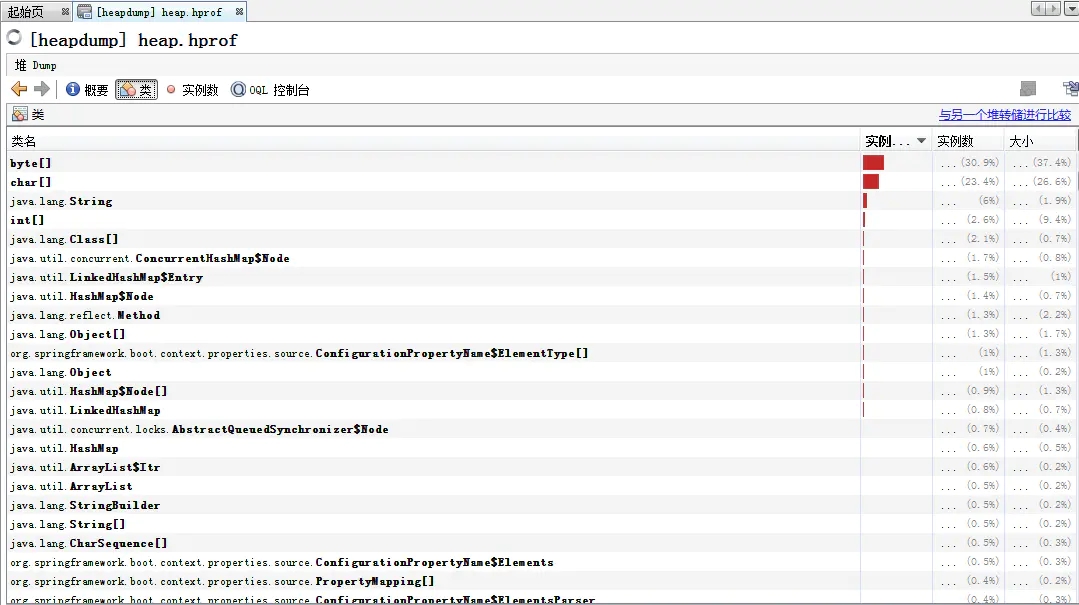之前整理了HashMap的源码分析
对于ArrayList,我们需要知道以下几点:
1 2 3 4 5 6 7 ArrayList实现了List接口,是顺序容器,元素存取的顺序相同。 允许放入null元素,底层通过数组实现。 除该类未实现同步外,其余跟Vector大致相同。 每个ArrayList都有一个容量(capacity),表示底层数组的实际大小。 容器内存储元素的个数不能多于当前容量。 当向容器中添加元素时,如果容量不足,容器会自动增大底层数组的大小。 所以这里的数组是一个Object数组,以便能够容纳任何类型的对象。
1 2 3 4 5 ArrayList初始化时候是一个空的Object数组 private transient Object[] elementData; 当添加第一个元素的时候,数组的大小变成10(也就是数组的默认大小) private static final int DEFAULT_CAPACITY = 10;
Add方法 1 2 3 4 5 6 7 8 每次add的时候都会进行剩余空间检查。 minCapacity = size + 1; 如果是第一次,则空间大小(minCapacity)直接变成10,再执行如下步骤: 1.判断minCapacity是否大于elementData.length 即:if (minCapacity - elementData.length > 0) 2.条件成立:grow(minCapacity); 3.grow内部调用Arrays.copyOf进行数组复制 4.Arrays.copyOf调用System.arrayCopy进行数组复制
1 2 3 4 5 6 7 8 9 10 11 12 13 14 15 16 17 18 19 20 21 private void grow(int minCapacity) { // 新数组增长为之前的1.5倍 int oldCapacity = elementData.length; int newCapacity = oldCapacity + (oldCapacity >> 1); // 如果还是小与minCapacity,那么变成minCapacity if (newCapacity - minCapacity < 0) newCapacity = minCapacity; // 判断是否超过数组最大的容量 if (newCapacity - MAX_ARRAY_SIZE > 0) newCapacity = hugeCapacity(minCapacity); // minCapacity is usually close to size, so this is a win: elementData = Arrays.copyOf(elementData, newCapacity); } //最大容量变成Integer.MAX_VALUE,或者超出MAX_VALUE范围,跑出OutOfMenory异常 private static int hugeCapacity(int minCapacity) { if (minCapacity < 0) // overflow throw new OutOfMemoryError(); return (minCapacity > MAX_ARRAY_SIZE) ? Integer.MAX_VALUE : MAX_ARRAY_SIZE; }
1 2 System.arraycopy(源数组, 源数组起始位置, 目标数组, 目标起始位置, 复制长度); System.arraycopy(elementData, index+1, elementData, index, numMoved);
检查是否越界 1 2 3 4 private void rangeCheck(int index) { if (index >= size) throw new IndexOutOfBoundsException(outOfBoundsMsg(index)); }
Set方法 1 2 3 4 5 6 7 8 既然底层是一个数组ArrayList的set()方法也就变得非常简单,直接对数组的指定位置赋值即可。 public E set(int index, E element) { rangeCheck(index); // 下标越界检查 E oldValue = elementData(index); elementData[index] = element; // 赋值到指定位置,复制的仅仅是引用 return oldValue; // 返回之前的元素 }
Get方法 1 2 3 4 5 6 get()方法同样很简单,唯一要注意的是由于底层数组是Object[],得到元素后需要进行类型转换。 public E get(int index) { rangeCheck(index); return (E) elementData[index];//注意类型转换 }
Remove()方法 1 2 3 4 5 6 7 8 9 10 11 12 13 14 15 16 17 18 19 20 21 22 23 24 25 26 27 28 29 30 31 32 33 34 35 36 37 38 39 40 41 42 43 44 45 46 47 remove()方法也有两个版本,一个是remove(int index)删除指定位置的元素, 另一个是remove(Object o)删除第一个满足o.equals(elementData[index])的元素。 删除操作是add()操作的逆过程,需要将删除点之后的元素向前移动一个位置。 需要注意的是为了让GC起作用,必须显式的为最后一个位置赋null值。 public E remove(int index) { rangeCheck(index); modCount++; E oldValue = elementData(index); int numMoved = size - index - 1; if (numMoved > 0) System.arraycopy(elementData, index+1, elementData, index, numMoved); elementData[--size] = null; // clear to let GC do its work return oldValue; } public boolean remove(Object o) { if (o == null) { for (int index = 0; index < size; index++) if (elementData[index] == null) { fastRemove(index); return true; } } else { for (int index = 0; index < size; index++) if (o.equals(elementData[index])) { fastRemove(index); return true; } } return false; } // 此方法跟remove基本一样,只不过不需要返回值,也不用检查是否越界 private void fastRemove(int index) { modCount++; int numMoved = size - index - 1; if (numMoved > 0) System.arraycopy(elementData, index+1, elementData, index, numMoved); elementData[--size] = null; // clear to let GC do its work }
AddAll方法 1 2 3 4 5 6 7 8 9 10 11 12 13 14 15 16 17 18 19 20 21 22 23 24 25 26 27 //把指定的集合元素添加到list后面,先进行容量检查,然后复制 public boolean addAll(Collection<? extends E> c) { Object[] a = c.toArray(); int numNew = a.length; ensureCapacityInternal(size + numNew); // Increments modCount System.arraycopy(a, 0, elementData, size, numNew); size += numNew; return numNew != 0; } //在指定位置插入指定的集合元素 public boolean addAll(int index, Collection<? extends E> c) { rangeCheckForAdd(index); // 原数组:头部 + 尾部 Object[] a = c.toArray(); int numNew = a.length; ensureCapacityInternal(size + numNew); // Increments modCount // 新数组:头部 + 空 + 尾部 int numMoved = size - index; if (numMoved > 0) System.arraycopy(elementData, index, elementData, index + numNew, numMoved); // 新数组:头部 + 新增 + 尾部 System.arraycopy(a, 0, elementData, index, numNew); size += numNew; return numNew != 0; }







